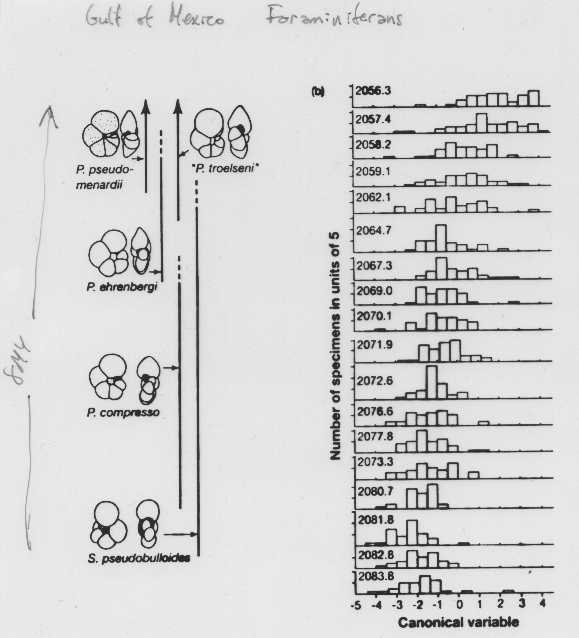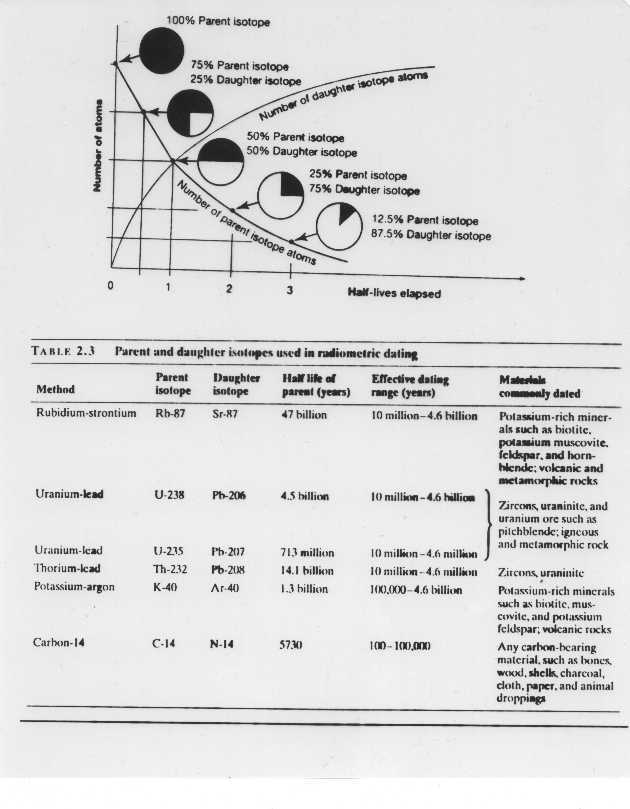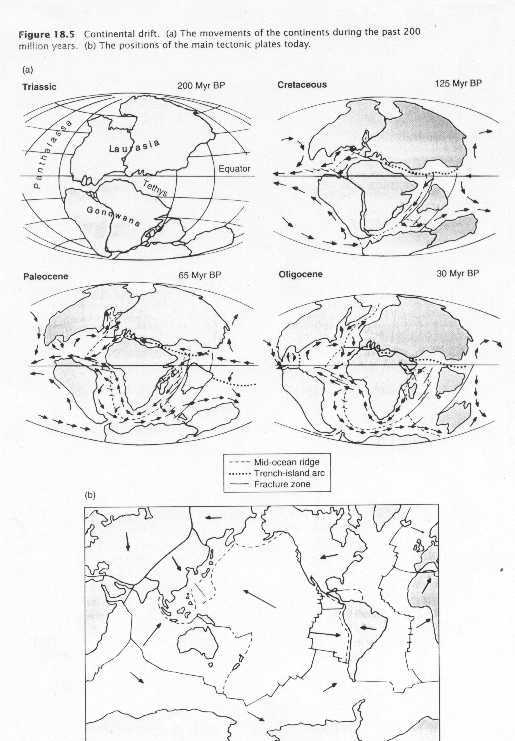
Fossils and Continental Drift
I. Fossils - provide direct evidence for evolution. Can occur in several ways.
A. Permineralized fossils
1. Organic material is replaced with water-soluble minerals such as silica and calcium carbonate in an anoxic environment
2. Typically found in rock outcrops after partial weathering
3. Pollen, spores and hard tissues from marine organisms
4. Teeth are common because enamel decays slowly due to its hardnessB. Compression and impression fossils
1. Created when material is buried in water or wind-borne sediments
2. Find by splitting sedimentary rocks along bedding planeC. Trace fossils, i.e. casts, molds and chemical fossils
1. created when material decays after being buried in sediment
2. Often the only way to infer behavior, e.g. Laetoli footprintsD. Unaltered remains - very rare
1. Amber - hardened resin, from Dominican Republic (20-30 MYA) or Baltic Sea (35-50 MYA)
2. Peat bogs - Irish Elk
3. Tar pits (La Brea - saber-toothed cat)
4. Permafrost - wooly mammoths, humans in Peru, Italy
5. Dry cavesE. Some marine fossils provide evidence for gradual change between species over time
1. foraminiferans
2. marine snails

F. Biases in the fossil record
1. geographic - usually lowland and aquatic habitats
2. taxonomic
a. marine organisms dominate the fossil record but make up 10% of extant spp
b. 2/3 of living phyla lack mineralized hard parts
3. temporal - erosian and movement of earth's crust destroys old rocks
II. Dating fossil material
A. Radio-isotope dating
1. Some isotopes of naturally occurring elements decay at a constant rate, i.e. exhibit exponential decay, until they become different elements or different isotopes of the same element
2. Measure isotope decay in units called half-lives
a. One half-life is the time it takes for 50% of the parent isotope to decay into the daughter isotope
b. half-lives are not affected by temperature, moisture or other factors
c. consequently, isotope decay can be used as a geological clock
3. C14 can be used to date organic remains between 100-100,000 years
4. Potassium-argon (K-Ar) can be used to date igneous rock between 100,000 and 4.6 billion years

B. Method
1. Exponential decay means that N = Noe-rt, where N is the amount of isotope now, No is the amount of isotope when the organism was alive (14C) or when the rock was formed (K-Ar), and r is the decay constant for the isotope, i.e.
a. 14C = 1.2 x 10-4/yr
b. 40K = 5.8 x 10-11/yr
2. Taking natural logs of both sides gives ln(N) = ln(Noe-rt) = ln(No) - rt
ln(No) - ln(N) = rt = ln(No/N) and
3. Solving for t = ln(No/N)/r
4. Measure parent and daughter isotopes in a rock using a mass spectrometer
5. Assume that isotopes do not move into or out of rocks
6. Date fossils by dating rocks or material in the same or boundary strata
C. Uranium-lead and potassium-argon can be used to date the origin of the earth
1. moon rocks = 4.53 billion years
2. meteorites = 4.6 billion years
3. if the solar system formed at one time, then earth is 4.6 billion years
D. Geological time scale (p 539-541) - names were associated with fossils before dates
1. Eons: Hadean, Archaean, Proterozoic, Phanerozoic
2. Eras: Paleozoic, Mesozoic, Cenozoic
3. Periods: Cambrian, Ordovician, Silurian, Devonian, Carboniferous, Permian
Triassic, Jurassic, Cretaceous, Tertiary, Quaternary
4. Epochs (Tertiary): Paleocene, Eocene, Oligocene, Miocene, Pliocene
(Quaternary): Pleistocene, Holocene
III. Continental drift and biogeography
Animals and plants exhibit distinct continental ranges. These distributions were difficult to explain until it was realized that the continents have been moving over geological time. This is referred to as continental drift
A. The earth's crust is made up of tectonic plates
1. 250 MYA - Pangea
2. 200 MYA - Laurasia and Gondwana separated by the Tethys Sea
3. 125 MYA - India broke away, S. America & Africa separated from Antartica and Australia
4. 65 MYA - S. America broke away from Africa, Australia from Antartica
5. 30 MYA - N. America broke away from Europe
6. 3 MYA - N America joined S. America

B. Current places where plates collide create fault zones - give rise to earthquakes
1. Recent plate collisions create mountains, e.g. India caused the Himalayas
2. Subduction zones often give rise to thermal vents, creating volcanos3. Archipelagos are created by plates moving over volcanic vents, e.g. Hawaiian islands

C. Continental movements explain patterns of plant and animal life
1. Species have defined geographic distributions
2. Wallace's biogeographic areas and Wallace's line
D. Geographic ranges are limited by climate which has also changed over geological time
1. Caused North-South animal and plant movements
2. Glaciation events dominated the Pleistocene. Most recent ice age was 10,000 years ago. Glaciation created forest refuges, e.g. Smoky Moutains

3. Great American exchange of mammals- South American mammals went extinct
a. included a rodent the size of a rhinoceros, Telicomys gigantissimus
b. giant ground sloths
c. saber-toothed borhyaenid